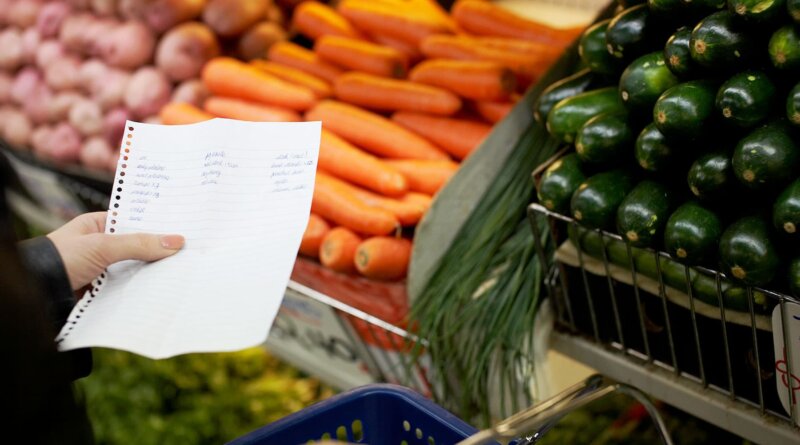How to Keep Your Menu in Line
About 3 million Americans have high potassium, or hyperkalemia, because of kidney disease, heart failure, or poorly controlled diabetes. Potassium is an important nutrient that helps your nerves and muscles, including your heart, work the right way. But if you have too much in your blood, it can be dangerous and lead to heart problems.
If you have hyperkalemia, it’s important to work closely with a nutritionist or other health professional to follow a low-potassium diet, says Courtney Barth, a registered dietitian and a nutritionist at the Cleveland Clinic. “It’s a delicate balance — while eating too much can be harmful, eating too little can cause problems, too,” she says.
What to Expect on Your First Visit to a Dietitian
If you have a condition like chronic kidney disease, your doctor will check your blood potassium levels often, usually once a month. Bring any information about your blood potassium levels to your first appointment with the nutritionist.
The levels indicate how high the potassium is:
- 3.5-5.0 is considered the safe zone.
- 5.1-6.0 is the caution zone.
- Higher than 6.0 is cause for more concern.
Ideally, you want to keep your potassium level under 5, Barth says.
A nutritionist may also ask you to keep a food diary for about 3 days, says Melissa Prest, a Chicago nutritionist and spokesperson for the Academy of Nutrition and Dietetics. Healthy people should normally get 3,500-4,500 milligrams (mg) of potassium each day. A potassium-restricted diet is usually about half that, or roughly 2,000 mg per day.
Your nutritionist may also ask you to provide a list of all the medications and supplements you’re on, Prest says. Certain ones can raise potassium levels, including:
- Blood pressure medications, such as ACE inhibitors, ARBs, and beta-blockers. Kidney patients often take these to control hypertension and help keep their kidneys working well. They also help keep kidney disease from getting worse.
- Herbal supplements. Some, such as milkweed, lily of the valley, Siberian ginseng, hawthorn berries, preparations from dried toad skin (bufo, chan su, senso), noni juice, alfalfa, dandelion, horsetail, or nettle can raise potassium levels.
- Over-the-counter nonsteroidal anti-inflammatory drugs (NSAIDs) such as aspirin, ibuprofen, and naproxen. These are common drugs used to reduce fever or treat headaches and other pain.
- Nutritional supplements. Some nutritional supplements contain potassium. Always tell your health care provider which ones you’re taking.
How a Dietitian Can Help You
Your dietitian will help tweak your diet to lower your potassium intake. This may include:
- Advising you about eating the right fruits and vegetables. “Oftentimes, patients tend to overly restrict foods with potassium, so as a result they don’t get enough fruits and vegetables, which are still important for overall health,” Prest says. Some good lower-potassium options include:
- Apples
- Apricots (canned in juice)
- Asparagus
- Blackberries
- Blueberries
- Broccoli
- Cabbage
- Carrots
- Cauliflower
- Cherries
- Corn
- Cucumber
- Grapes
- Kale
- Lettuce
- Mandarin oranges
- Peaches (one small fresh or canned)
- Pears (one small fresh or canned)
- Pineapple (or pineapple juice)
- Strawberries
- Yellow or zucchini squash
Just remember that for most of these foods, a portion is a half-cup. “If you eat more than a portion or two, it can turn a low-potassium food into a higher-potassium food,” Prest says.
Fruits higher in potassium include bananas, avocados, melons, oranges, prunes, and raisins. But always check with your nutritionist before cutting out those foods, Prest says. “If your potassium levels are normal, then there’s no reason why you can’t safely eat these fruits, which are all good for you.”
- Going for the white stuff. Surprisingly, white breads, pastas, and rice are recommended over whole-wheat varieties if you have kidney disease. This is because the more bran and whole grains in the bread, the higher the potassium. “Whole-grain products have more potassium, so they need to be limited if you have kidney disease,” Barth says. Just don’t overdo it on the starchy stuff, she says, because they can cause you to gain weight. That’s bad if your hyperkalemia is caused by a condition like chronic kidney disease, heart failure, or diabetes.
- Helping you come up with a low-potassium meal plan. Even though you may know what you should and shouldn’t eat, it can be tricky to put it all together so that you only get about 2,000 mg of potassium a day. In general, each day you should aim for:
- 1-3 servings of low-potassium fruit per day
- 2-3 servings of low-potassium vegetables per day
- 1-2 servings of low-potassium dairy like cottage, cheddar, or Swiss cheeses
- 3-7 servings of low-potassium protein like eggs, chicken, turkey, tuna, shrimp, or unsalted peanut butter
- 4-7 servings of low-potassium grains, like white rice
Most of these foods have less than 200 mg of potassium per serving. A dietitian can teach you how to measure portion sizes and calculate the total amount of potassium in each meal so that you stay around an average of 2,000 mg per day.
- Teaching you how to leach your veggies. You can still enjoy higher-potassium veggies like potatoes, sweet potatoes, carrots, beets, and winter squash, Barth says, as long as you leach them. This will help pull some of the potassium out. Here’s how to do it:
- Peel and place the vegetable in cold water.
- Slice the vegetable an eighth of an inch thick.
- Rinse it in warm water for a few seconds.
- Soak it for at least 2 hours in warm water.
- Rinse the vegetable under warm water again for a few seconds.
- When you cook the vegetable, use five times the amount of water to the amount of vegetable.
- Showing you how to read food labels. Ingredients are listed in order by weight, with the item of the most weight listed first. “If potassium chloride is in the ingredient list, it has a high potassium content,” Barth says. She also advises looking at the percentage of daily value. It should be less than 6%, or 200 mg, of potassium.




